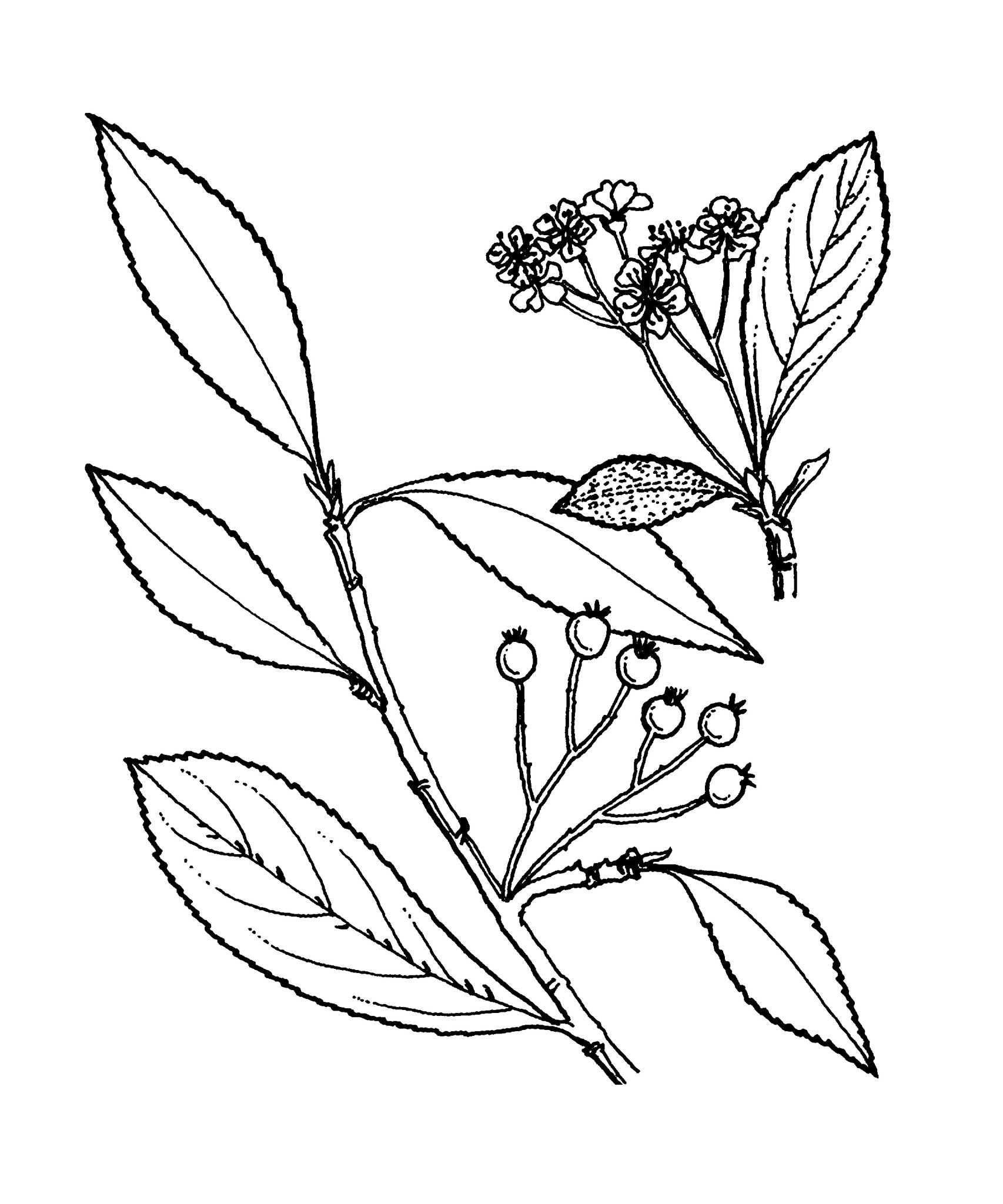
From the Greek — Aria, the name used for Sorbus aria.
Deciduous shrubs. Buds narrow and pointed, borne close to the stem. Leaves alternate, simple, toothed and with blackish glands on the midrib of the upper surface; stipules small, soon shed. Flower clusters small, flat-topped. Flowers with the 5 sepals joined at the base. Petals 5, white or pale pink, to 1 cm long. Stamens numerous, with purplish anthers. Ovary inferior, 5-chambered, with 5 styles united at the base. Carpels more or less free. Fruit apple-like, to 1 cm long, red to black with a persistent calyx.
A genus sometimes placed in Amelanchier. Occasionally cultivated in cooler Australia for the autumn foliage and attractive but inedible fruits (hence the common name).
A. melanocarpa (Michx.) Elliott from E North America has glossy, purplish black fruit. A. ×prunifolia (Marshall) Rehder (now considered a hybrid A. arbutifolia × A. melanocarpa), from E North America, grows to 4 m tall and has more open flower clusters and fruits that are brownish purple.
3 species from E North America.
Seed or cuttings.
Shrub with triangular stipules; petals to about 1 cm long; red to black fruits to 1 cm long.
Source: (2002). Rosaceae. In: . Horticultural Flora of South-eastern Australia. Volume 3. Flowering plants. Dicotyledons. Part 2. The identification of garden and cultivated plants. University of New South Wales Press.
